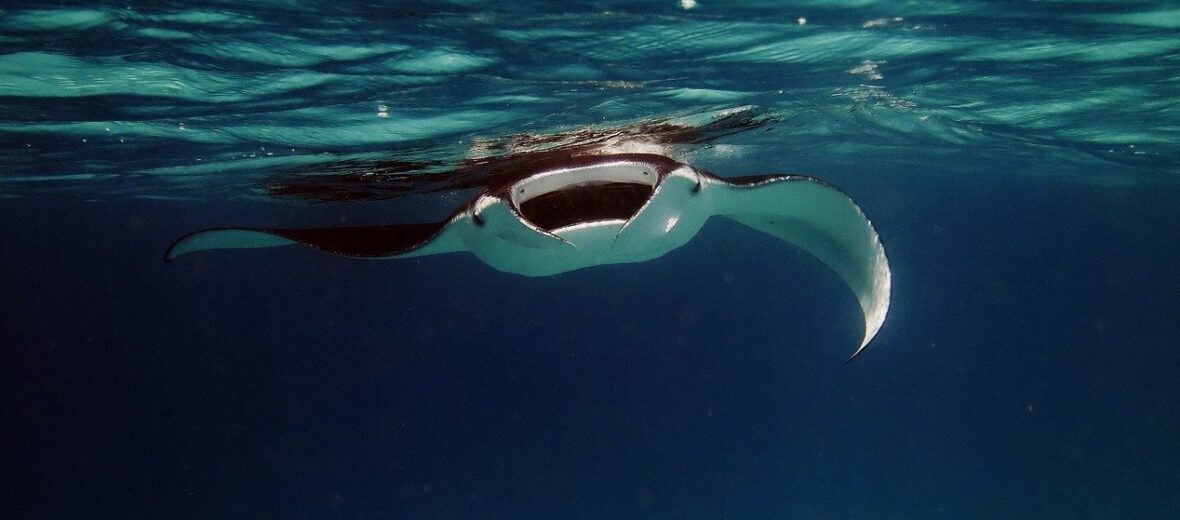
The ocean, with its many amazing creatures also houses some truly awe-inspiring critters called manta rays. The manta ray is a marvel to behold and harmless to boot. They travel great distances throughout the oceans feasting on plankton, crustaceans, and small fish. Unfortunately, they are also subject to predation by humans. Some very misinformed people within various international markets feel that their cephalic fins have a medicinal purpose… they don’t! They are listed as Vulnerable by the IUCN.
First the Stats…
Scientific name: Manta birostris
Weight: Up to 3,600 lbs.
Length (width): Up to 20 feet
Lifespan: Up to 20 years
Now on to the Facts!
1.) The current form of manta rays have been dated back up to 25 million years!
2.) There are 11 known species in the ray family, counting both manta rays and mobula rays (now among the world’s most endangered fish)
3.) Giant manta rays are found in the eastern Pacific and make tremendous ocean crossings. However, reef manta rays make stops at Hawaii and French Polynesia.
4.) A notable feature of the manta ray are the cephalic fins on either side of their head, which are used to funnel plankton-abundant water into their mouths while they feed. These fins helped to give way to the name devil ray.
5.) Manta rays have the largest brain in the fish kingdom. They have even been witnessed performing coordinated feeding!
But wait, there’s more about the manta ray!
6.) Like leopard sharks, manta rays can be individually identified by the spots on the underside of their bodies.
7.) Manta rays give birth to just 1 pup per year.
Did you know…?
The word manta is Spanish for ‘blanket’.
8.) Manta rays are sometimes seen leaping out of the water. It is thought that they do this for the removal of parasites or perhaps during a mating ritual. With their brain size, they might even be doing this for fun.
9.) The manta ray is related to sharks because both sharks and rays belong to the Elasmobranchii subclass and are characterized by a skeleton made of cartilage rather than of bone.
10.) Even though they are very large, they are harmless to humans. Not even their tail spine is functional. They are beautiful filter feeders that feast upon crustaceans, plankton and small fish.
Now a Short Manta Ray Video!
Also, check out the Critter Science YouTube channel. Videos added frequently!
Want to suggest a critter for me to write about? Let me know here.
Learn more about all kinds of cool critters, right here!
Some source material acquired from: Wikipedia & IUCN



